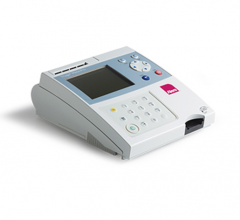February 2, 2009 - A recent study published in Clinical Cardiology revealed that "emerging risk factors," including detailed cholesterol measurements such as HDL(2) and remnant lipoprotein particles, play a much greater role in determining heart disease risk than previously thought, and that traditional risk factors such as age, standard cholesterol levels and blood pressure do a poor job of predicting heart disease risk in younger, healthy adults with a family history of early heart disease.
The study was entitled Prevalence of Emerging Cardiovascular Risk Factors in Younger Individuals with a Family History of Premature Coronary Heart Disease and Low Framingham Risk Score, and is said to be the latest in a series of clinical studies showing that the traditional Framingham risk score doesn't always do a good job of estimating that risk, especially among people in their mid-30s to early 60s.
Measurement of emerging clinical and lipid risk factors in the study was done with the VAP) (Vertical Auto Profile) Cholesterol Test from Atherotech Inc. The VAP Test provides physicians with direct measurement of LDL (bad cholesterol), HDL (good cholesterol) and all relevant cholesterol subclasses. These often overlooked subclasses include non-HDL, particle number as determined by accurate apoB, and emerging risk factors such as Lp(a), low-density lipoprotein remnants and small dense LDL.
The VAP Test, says the company, is also the only commercially available advanced lipid profile that routinely reports all three lipoprotein parameters — LDL, non-HDL and apoB — considered necessary by the 2008 expert consensus guidelines issued by the American Diabetes Association and American College of Cardiology.
In the Clinical Cardiology study, researchers evaluated 89 men and women with an average age of 47 with a family history of premature coronary heart disease (CHD) and who had a low Framingham risk score. The risk factors included in the Framingham calculation are age, total cholesterol, HDL cholesterol, systolic blood pressure, treatment for hypertension and cigarette smoking. Patients with existing CHD or CHD equivalents were excluded.
The most common emerging risk factor for heart disease that was missed using traditional cholesterol testing methods was low HDL(2). The second most overlooked emerging risk factor was high levels of triglyceride rich remnant lipoproteins such as IDL (intermediate density lipoproteins) and very low density lipoproteins (VLDL(3)). Low HDL(2) was present in 72 percent of the study group, and high levels of IDL + VLDL(3) were present in nearly half (49 percent) of patients. In addition, 38 percent of the participants had coronary atherosclerosis as reflected in EBCT derived coronary calcium scores, and 24 percent of the participants had "at-risk" levels of C-reactive protein (above 3 mg/dl).
All patients were screened for emerging clinical and lipid risk factors with the VAP Test. Researchers noted that only 11 percent of the participants would have been prescribed lipid-lowering therapy based on current National Cholesterol Education Program Adult Treatment Panel III guidelines.
The authors concluded that, "The Framingham risk score underestimates cardiovascular risk in individuals with a family history of premature CHD, and screening for emerging cardiovascular risk factors may better assess CV (cardiovascular) risk in these patients."
For more information: www.thevaptest.com


 August 05, 2019
August 05, 2019 







